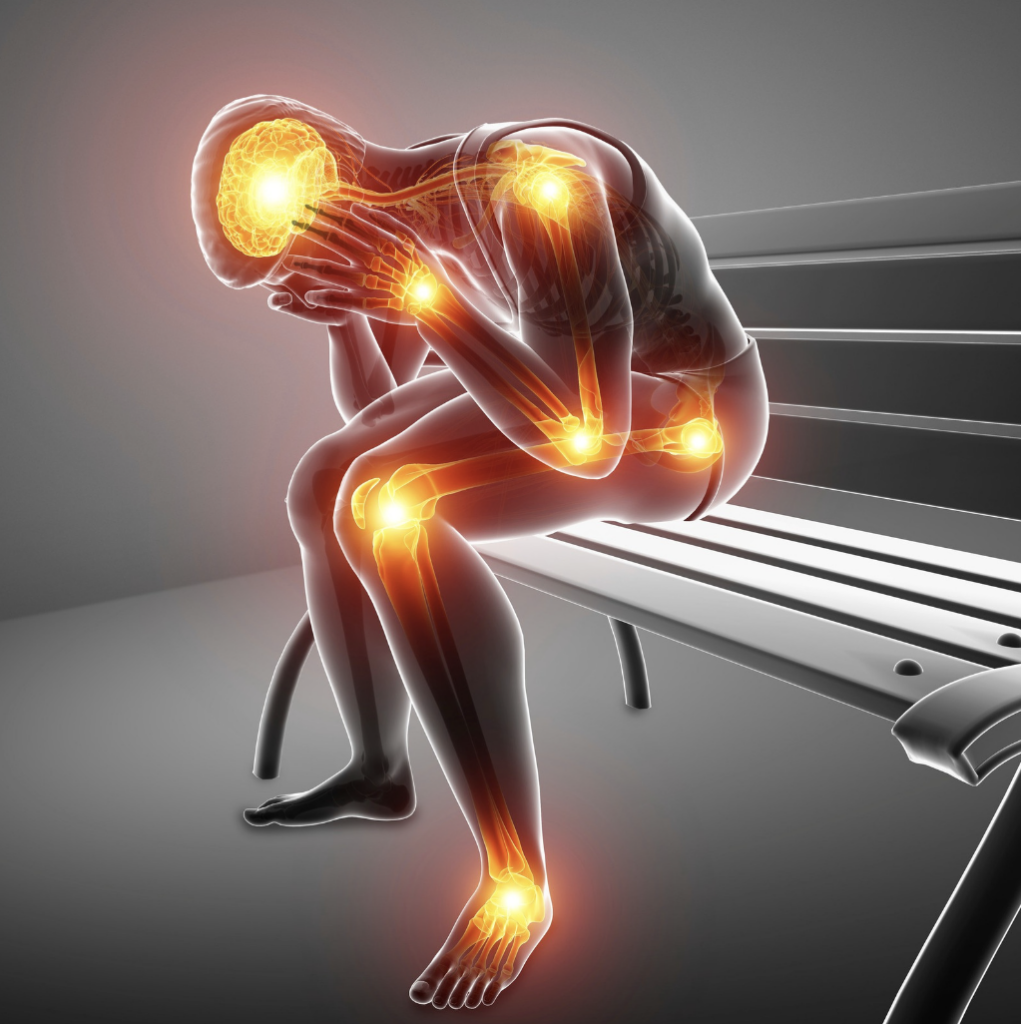Joint Health
What Causes Joint Pain All Over the Body?
Joint pain is a common problem that affects millions of people worldwide. A wide range of conditions, including injury, inflammation, and disease, can contribute to it. When joint pain spreads throughout the body, it can be especially distressing and difficult to manage. We will look at some of the most prevalent causes of joint pain that affect many joints in the body in this article.
Arthritis is one of the most common causes of joint discomfort throughout the body. It is a broad phrase that refers to joint inflammation. Arthritis can be classified into several forms, including osteoarthritis, rheumatoid arthritis, and psoriatic arthritis. Each variety of arthritis has its own set of symptoms and causes, but they all have one thing in common: joint inflammation. Arthritic joint pain can be felt in a variety of joints throughout the body, and it can be especially intense in the morning or after periods of inactivity.
Fibromyalgia is another major source of joint discomfort throughout the body. Fibromyalgia is a persistent pain disorder that affects the body’s muscles and soft tissues. It is distinguished by broad discomfort, tiredness, and tenderness in various parts of the body. Many patients who have fibromyalgia also have joint pain, which can be severe and incapacitating. The precise etiology of fibromyalgia is unknown, however, it is thought to be related to changes in the way the brain interprets pain signals.

Underlying Medical Conditions
Underlying medical issues can cause joint discomfort all across the body. The following are some of the most frequent joint pain issues.
Arthritis
Arthritis is a joint disorder that is characterized by pain, stiffness, and swelling. There are numerous forms of arthritis, the most common of which are osteoarthritis and rheumatoid arthritis. Osteoarthritis is caused by joint wear and tear, whereas rheumatoid arthritis is an autoimmune illness that produces joint inflammation. Both types of arthritis can produce widespread joint pain.
Fibromyalgia
Fibromyalgia is a condition that causes muscular and joint pain, tiredness, and soreness. Fibromyalgia’s specific cause is unknown, however, it is thought to be connected to abnormalities in the way the brain and spinal cord receive pain signals. Fibromyalgia can cause joint pain throughout the body, as well as headaches, sleep problems, and irritable bowel syndrome.
Lupus
Lupus is an autoimmune condition that can affect a variety of body components, including the joints. It can cause joint discomfort throughout the body, as well as exhaustion, fever, and skin rashes. Lupus can also harm other organs, including the kidneys and lungs.
Finally, joint discomfort throughout the body might be caused by a variety of underlying medical disorders. If you are suffering from joint discomfort, you should speak with your doctor to discover the underlying reason and develop an effective treatment strategy.

Lifestyle Factors
Poor Posture
Poor posture is one of the contributing factors that can cause joint discomfort all over the body. Sitting or standing in the wrong position for a lengthy amount of time can cause joint pain and discomfort. Poor posture can also lead to muscle imbalances, putting additional strain on the joints.
To improve your posture, pay attention to how you sit and stand. workouts that strengthen the muscles that maintain proper posture, such as core workouts and shoulder blade squeezes, can also be tried.
Lack of Exercise
A lack of exercise is another lifestyle problem that can contribute to joint discomfort all over the body. Exercise keeps the joints mobile and flexible, lowering the likelihood of pain and stiffness. Exercise also helps to strengthen the muscles that support the joints, which reduces the load on the joints.
If you are not already exercising, it is critical to begin carefully and gradually increase your activity level. Swimming, cycling, and walking are all low-impact exercises that can help patients with joint pain. Strength training exercises, which serve to build muscle and support the joints, can also be beneficial.
We can lower the likelihood of joint discomfort across the body and enhance our overall health and well-being by addressing lifestyle issues such as bad posture and lack of exercise.
Infections and Injuries
Bacterial Infection
Bacterial infections can result in joint pain throughout the body. Lyme disease, gonorrhea, and strep throat are the most frequent bacterial diseases that cause joint pain. Lyme disease is transmitted through a tick bite and can cause joint pain, particularly in the knees. Gonorrhea can cause joint discomfort in addition to other symptoms such as fever and skin rashes. Joint pain can result from strep throat, especially in children.
Physical Trauma
Physical trauma, such as injuries sustained in accidents, falls, or sports, can result in joint discomfort throughout the body. Sprains and fractures are the most common injuries that cause joint discomfort. A sprain is an injury to the ligaments that link the bones. A bone fracture is a break in the bone. Both of these injuries have the potential to produce joint discomfort, edema, and stiffness.
If you have joint discomfort after an injury or fear you have a bacterial infection, you should seek medical assistance. Antibiotics may be used to treat bacterial infections, whereas rest, ice, compression, and elevation may be used to treat physical damage.

Conclusion
The exploration of joint pain causes reveals a multifaceted landscape where various factors converge to influence our musculoskeletal well-being. From the intricate interplay of genetics and age-related wear and tear to the impact of lifestyle choices and underlying medical conditions, understanding the root causes of joint pain is essential for effective management and prevention. This journey underscores the significance of adopting a holistic approach that addresses not only the symptoms but also the contributing factors.
By unraveling the intricate tapestry of joint pain causes, individuals are empowered to make informed choices, promoting a life marked by mobility, comfort, and an enhanced quality of life.


